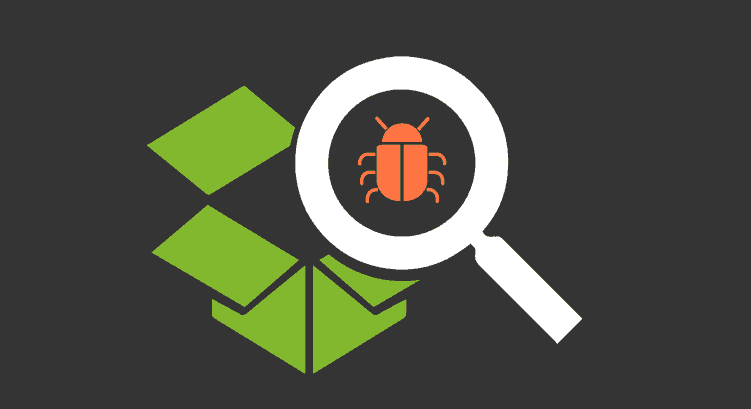Software bugs: do you know why they’re always there for you?
“Do you know how computer ghosts frighten?
-The spectrums? No, I don’t! How do they do it?
-¡¡¡BUUUUUUUUG!!!”
And that’s how Nando and Rodri, educated people in the technology
sector, laughed the whole time last Halloween.
What they didn’t explain to us in that joke, sample of their sharp intelligent humor, is what the hell a bug is and why all software gets bugs. So let’s try to define it ourselves with as few jokes as possible.
Software Bugs: What is a bug?
A bug is a flaw. Usually a problem with code in a computer program. Although it may refer to an error in the behavior of the program, it does not operate with the intentions of its creator or, more abstractly, that the same intentions of the computer designer do not satisfy the user’s expectations. Because, sometimes, the program does just what the computer scientist wants, which is good but catches the user by surprise and creates problems. It would be an intentional failure in the program code.
But rest assured, there is already a process that takes care of finding the bugs before the user. They call it Debugging. This exhaustive troubleshooting begins right after the first writing of the code and continues in the consecutive stages as the code is combined with new programming patterns to form a software.
As you know maybe the gamers (hello, gamers!), when the product is almost “finished” there are beta testing phases accessible to the public. In this way, users have their moment to find new errors and provide feedback with the creator who is looking forward to receiving your help in perfecting his or her product.
At this point you will ask yourselves: Can a bug kill you? Well, you’ll see, although they’re usually just annoying they’ve caused more than one major issue.
In 1982 the USA passed a software with bugs to the Soviets, keen on subtracting any kind of intelligence from the Americans, and ended the thing in a big explosion, the biggest non-nuclear explosion in history.
From 1985 to 1987, a medical device for radioactive therapies managed, through a bug, to kill instead of curing with radiation.
1995, for those who are still trying to put Play 1 games into Play 4: the Ariane 4 code is used in Ariane 5 and thanks to its more modern and powerful engines, a chain of bugs begins that basically makes the rocket, in which seven billion dollars have been invested, burst 40 seconds after its launch.
2000: A software bug (and removing the supervision of efficient medical humans from the equation) caused patients at the National Cancer Institute in Panama City to be given lethal doses. 8 patients died, 20 continued with fairly serious health problems. And well, the doctors and not the bug were accused of murder. So the answer is, “Yes, a bug can kill you.”
Now that you know it can make a mess, it´s okay to have a healthy interest about where the word “bug” comes from. Well, it was born, as it could not be otherwise, in the engineering sector. The use of this concept in the world of computing is attributed to Grace Hopper, although we do not know if erroneously. In 1944 she was a computer pioneer and naval reserve officer, and was always seen at work with the Mark I computer at Harvard. It is not known whether she or engineers -who worked on the Mark II and reported a failure in an electromagnetic relay- were the ones who pulled out that word (“bug”) that caused an error in their corresponding devices. But the bug was exposed for years, even now it’s the property of the Smithsonian Institute. Underneath it reads the sign “First actual case of bug being found”.
Software bugs: Why does every software have bugs?
Well, this is simple; software bugs, why does all software have bugs? The answer is clear: all software has bugs because we are human beings and sometimes we do it wrong when it comes to programming. No matter how much care is taken and no matter how many nets are put in place to prevent it from happening, there are so many variables that not all of them can be predicted.
We are human and we make mistakes, but we learn from those mistakes, people.
Flaws are those little things that make us humans and annoy the user, but as the human spirit has shown in many cases, our creations can be corrected, improved. From there, as a response to software bugs, patches emerged. Modifications, both software and hardware, that fix the flaws and make us better people.
Let’s get closer to another type of concept, one that gives more benefits and good results. What do you think about monitoring systems? One of them is Pandora FMS. FMS stands for “Flexible Monitoring System”.
And why is it called that? Because Pandora FMS is one of the most flexible monitoring software on the market. Pandora FMS is able to monitor devices, infrastructures, applications, services and business processes.
Nowadays there are many companies and organizations that have Pandora FMS. Do you want to know some of them and read some of our success stories? Click here: https://pandorafms.com/pandora-customers/
Or you can start from the beginning and get to know what Pandora FMS can offer you, here: https://pandorafms.com
You can even send us any question you may have about Pandora FMS. And you can also do it in a very simple way, thanks to the contact form that can be found in the following address: https://pandorafms.com/contact/
Pandora FMS’s editorial team is made up of a group of writers and IT professionals with one thing in common: their passion for computer system monitoring. Pandora FMS’s editorial team is made up of a group of writers and IT professionals with one thing in common: their passion for computer system monitoring.

















